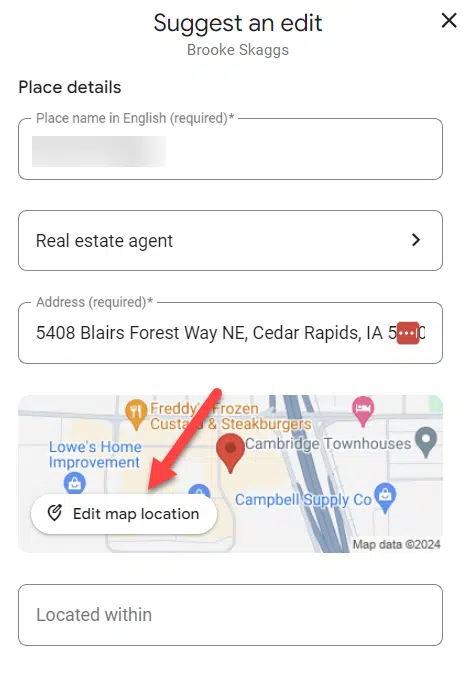Launching a new website is one of the more exciting projects for a company. And during these projects, everyone involved obsesses over the smallest details as if their lives depended on it.
The colors, the logos, the fonts, the pictures – no stone is left unturned, except the stone that has SEO underneath it. Often, SEO is the team not allowed in the room.
After the big launch, everyone expects traffic to appear magically. When it doesn’t, they have to spend more money fixing an SEO problem.
Building SEO from the ground up in a website is less expensive and gets results faster compared to trying to bolt it on as an afterthought.
This article will explain the three stages of a website launch and how SEO should play a part in each stage:
- The strategy phase
- The build phase
- The launch phase
If your company is launching a new website and you want to advocate for SEO during the process, read on.
Stage 1: The strategy phase
In the strategy phase, teams discuss how the website will look and function.
While others are debating about whether the website should have black and white or color photos, your job is to lay the foundation for SEO.
The best way to do that is through the following key tasks that will impact how designers and developers build the site:
- Keyword research
- SEO siloing
Keyword research
Keyword research helps you align your website content with the queries that your target audience uses when they search for what you have to offer.
What role does this play in the new website?
The keyword research you do during the planning stage will impact what content shows up on the website at launch. For example, it can help build the navigation on the site and what the topics will be.
You will get a chance to engage the team during this phase by asking them questions to create your seed list of keywords, like:
- What are the main topics your website should be relevant for?
- What would you search for on a search engine if you were looking for what we have to offer?
- How does our audience describe what we have to offer?
- What are the problems that our products or services solve? What would someone search for if they had those problems?
You should have a nice list after exploring these questions (and possibly more). Then you must do the heavy lifting of refining that keyword list with the right SEO tools.
Once you have refined the list, you can see more clearly what the main navigation will look like. And I’ll touch on what to do with that next in SEO siloing.
SEO siloing
SEO siloing helps to organize content and links on a website. Some of the goals of SEO siloing include:
- Helping users navigate the website with ease.
- Maximizing your site’s relevance for important keywords, thus helping pages to rank.
- Building your site’s expertise and authority on a subject matter.
With your keyword research, you can mock up a site architecture that will support those keywords with content.
How? I’ll use a fictional power tools website as an example of how you might architect a site using keyword research.
If you ran a power tools company that sold cordless power tools, electric power tools and gas-powered tools, then your keyword research would likely show that you want to go after key terms like “cordless power tools,” “electric power tools” and “gas-powered tools,” among others.
As you create the site navigation for the website’s designers and developers (yes, you should be involved in this!), you’d show how the site navigation and content will support those keywords.
Below is a graphic illustrating the landing pages and subpages to be developed on the power tools website. The pages will have content that supports the primary keywords.

SEO siloing takes things further and indicates how to link these pages.
Stage 2: The build phase
As you move away from the strategy phase and enter into the build phase, the designers/developers create the site.
This is usually the longest phase of the website launch, and it’s another time when your job is to ensure everyone is thinking about SEO.
There are three primary areas of concern:
- The technical aspect of the website.
- The content development on the site.
- The on-page optimization of the site.
Technical aspects
Many website designers and developers aren’t well-versed in SEO. So they can mistakenly build a site that works against a search engine’s ability to crawl and understand a website.
Not only that, but you could build pages that don’t offer the best user experience. And many website publishers want to keep Google’s page experience update in mind as they optimize their pages.
Before they start their work, make sure your designers/developers are on the same page with SEO-friendly web design.
Have discussions about how the website will:
- Be easily accessible and crawlable for search engines.
- Ensure people using all types of devices can access the site with ease.
- Have webpages that are easy to interact with (links, buttons, pop-ups, etc.).
- Be fast and secure.
The people building the site should keep the following SEO-friendly design principles in mind:
- Clean code
- A fast site
- Mobile-friendliness
- Core web vitals
- Avoiding annoying pop-ups
- Implementing HTTPS
Google has information on many of these topics at Google for Developers.
The content
Content is one of the most important SEO tasks in a website launch.
Google wants to rank the highest quality content in its search engines. And given that you are competing against millions of other websites, this part must count.
As the person advocating for SEO, you need to ensure each landing page and subpage is filled with quality, helpful content.
As you are creating the content, ask questions like:
- Will the content be created with the necessary experience and expertise for the topic?
- Is your website/brand positioning itself as an authority on the topic?
- Can people trust you?
- Are you answering the query better than your competition?
- Are you including data from the search results like “People Also Ask and Searches related to in addition to addressing common FAQs?
- Are you including original research, data, opinions and images?
- Are you fact-checking and citing quality, relevant resources?
- Are you writing with a high degree of accuracy when discussing “Your Money or Your Life” topics?
For more, see Google’s:
Dig deeper. How to survive a Google core update and come out on top.
Optimization
Once the pages are built and the content is in, the next step is to optimize every page to the best of your ability.
There is no one-size-fits-all checklist here, but some of the most important on-page tactics to consider are:
- Readability: Is your content written at a grade level appropriate for the audience and the subject matter?
- Meta tags: Do each of your webpages have original and compelling title tags and meta descriptions with the right character count, that includes your keywords?
- Heading tags: Are the heading tags on webpages properly formatted in the right sequence? (H1, H2, H3, H4, etc.)
- Keyword optimization: Can you tweak the content using keywords to improve the page’s relevancy, even a little bit more?
- Image optimization: Are the images on the page optimized so that you have more chances to drive traffic through images in the search results?
- Alt text: Did you include alt text on images for the vision impaired?
- Schema: What opportunities are available to you to clarify to the search engines what the page is about, and also to enhance your search engine results listings? See Schema.org for more.
- Other structured data: Have you formatted the page to make it easier for search engines and people to understand the content? (Table of contents, tables, bulleted lists, etc.)
- Links: Are your links fully qualified? Absolute links may take more work upfront but are easier to maintain in the long run.
Get the daily newsletter search marketers rely on.
Stage 3: The launch phase
It’s go time and the pressure is on.
The launch phase should go smoothly if everything was done well leading up to it. However, there are still some critical SEO tasks in the pre-launch and launch phases.
Pre-launch
Before the site goes live, do the following tasks:
- Accessibility: Crawl the website with an SEO tool to see if there are any errors.
- Analytics: Make sure Google Analytics and Google Search Console are correctly configured.
- Technical: Ensure things like the XML sitemap, HTML site map and robots.txt file are set up properly.
Launch
Launch day is an exciting time for everyone involved. In terms of SEO, this stage is all about monitoring and reacting accordingly.
Look for things like:
- Technical errors: Using SEO tools, monitor the site for technical issues.
- Indexing problems: It may take a few days or weeks for the site to be fully indexed, but be sure to watch for any indexing problems that arise.
After launch, remember that SEO will never end – it will progress and change.
As long as you have competition, and as long as Google makes changes to Search, you will need an SEO strategy for your website.
Start strong with your new website
With more competition now than ever in search results, building SEO into a new website from the ground up gives you a better chance to perform.
The sooner you can begin driving traffic, the better – every day counts as you work to get ahead of your competition.
If you are part of a website launch team, ensure everyone thinks about SEO at every stage, including the strategy, build and launch phases, by following the guidance in this article.
Dig deeper: SEO during website development and post-launch: Key considerations
Opinions expressed in this article are those of the guest author and not necessarily Search Engine Land. Staff authors are listed here.




